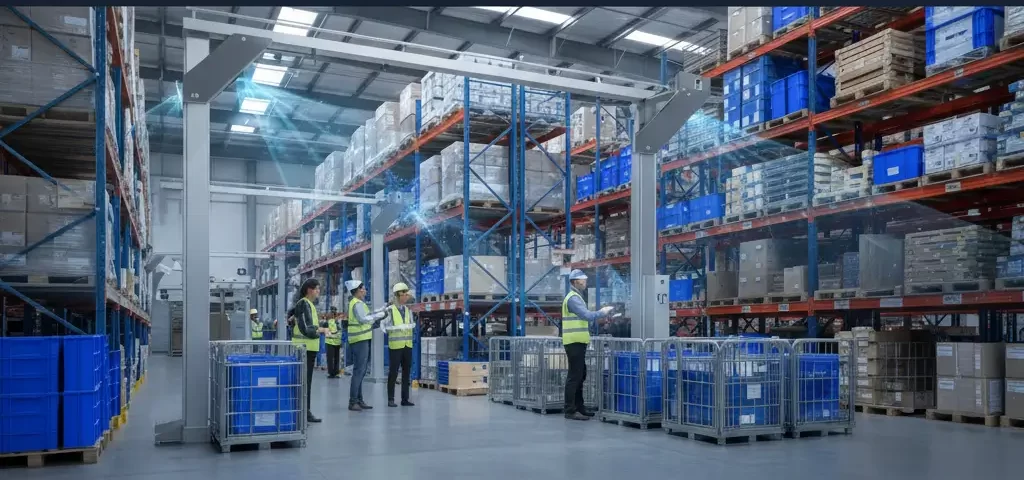Blog on RFID Technology and IoT Solutions
Blog Home
5 Common Returnable Transport Item (RTI) Challenges Solved by RFID Solutions
06 October 2025In today’s high-velocity supply chains, Returnable Transport Items (RTIs)—pallets, crates, totes, containers, and kegs—are the unsung heroes. They move products from location to location, protect goods in transit, and allow companies to save costs compared to single-use packaging.
Yet there’s the rub: if not well-managed, RTIs themselves can be a tremendous cost centre. Lost containers, inefficient tracking, and lack of visibility plague manufacturers, distributors, and retailers alike.
That’s where RFID (Radio-Frequency Identification) technology is entering to transform RTI management. With real-time visibility, automated tracking, and smarter data insights, RFID is allowing companies to reduce waste, lower costs, and run leaner supply chains.
Let’s dive into the five most common RTI challenges and explore how RFID provides strong solutions.
Challenge 1: RTI Loss and Theft
The problem:
RTIs are valuable assets, but they disappear in transit, get lost at customer sites, or are stolen. Studies show that businesses lose 10–25% of their RTIs annually, and that represents millions of dollars of wasteful spending.
RFID solution:
By marking each RTI with an RFID chip, businesses can track its movements at any stage in the supply chain. If a crate or pallet does not come back as expected, the system is aware of exactly where it was last scanned. This reduces losses by a considerable amount and makes partners more responsible.
Challenge 2: Lack of Visibility and Control
The problem:
Most businesses rely on manual procedures, spreadsheets, or barcodes to track RTIs. This creates blind spots, delays, and ineffective asset utilization. While RTIs are sitting in warehouses or bottlenecks, businesses purchase unnecessary extras.
RFID solution:
RFID readers automatically capture RTI movements in real time, with no need for manual scanning. Managers have visibility into:
- How many RTIs are in circulation
- Where they are
- How long they’ve been idle
This end-to-end visibility allows for smarter allocation and faster return cycles, eliminating the guesswork.
Challenge 3: High Operational Costs
The problem:
Inefficiently managed RTIs lead to over-spending on replacements, inefficient cleaning cycles, and unnecessary transport costs. Businesses retain more stock than they need to just to cover losses.
RFID solution:
RFID provides accurate utilization data. With insight into circulation times, companies can optimize the number of RTIs in circulation and reduce over-buying. This reduces costs directly and improves return on investment (ROI).
Challenge 4: Manual Errors in Tracking
The problem:
Barcode scanning or manual counting is labour-intensive and prone to mistake. Human errors—missed scans, erroneous entries, or misplaced items—make it difficult to maintain an accurate RTI database.
RFID solution:
Unlike barcodes, line-of-sight reading is not required for RFID. Multiple tagged RTIs can be read simultaneously in seconds. This automation eliminates human error, improves accuracy, and frees staff time to carry out more valuable tasks.
Challenge 5: Hygiene, Quality, and Compliance Issues
The problem:
In industries like food, pharmaceuticals, and healthcare, RTIs must meet strict hygiene and safety standards. Without reliable tracking, some containers may be overused, under-cleaned, or fail to comply with regulatory requirements.
RFID solution:
RFID tags store information about each RTI’s usage history and cleaning cycles. This ensures that:
- Containers are cleaned and reused according to standards.
- Damaged RTIs are flagged for repair or replacement.
- Regulatory audits are simpler, with electronic records in real time.
- Compliance is heightened and risks are reduced in sensitive industries.
Bonus Benefit: Data-Driven Optimization
On top of solving these problems, RFID allows for powerful **data analytics**. Businesses can:
- Identify bottlenecks in the supply chain
- More accurately predict RTI demand
- Improve customer service through assured container availability
The result is a smarter, more sustainable supply chain that uses fewer resources more effectively.
Final Thoughts
Returnable Transport Items are the lifeblood of logistics, but when not managed properly, they drain profits. **RFID technology revolutionizes RTI management** by minimizing losses, providing real-time visibility, decreasing costs, eliminating manual discrepancies, and guaranteeing compliance.
Companies that use RFID solutions gain not only cost benefits but also a competitive edge in efficiency and sustainability.
- Intellistride.com
- Blog
- 5 Common Returnable Transport Item (RTI) Challenges Solved by RFID…